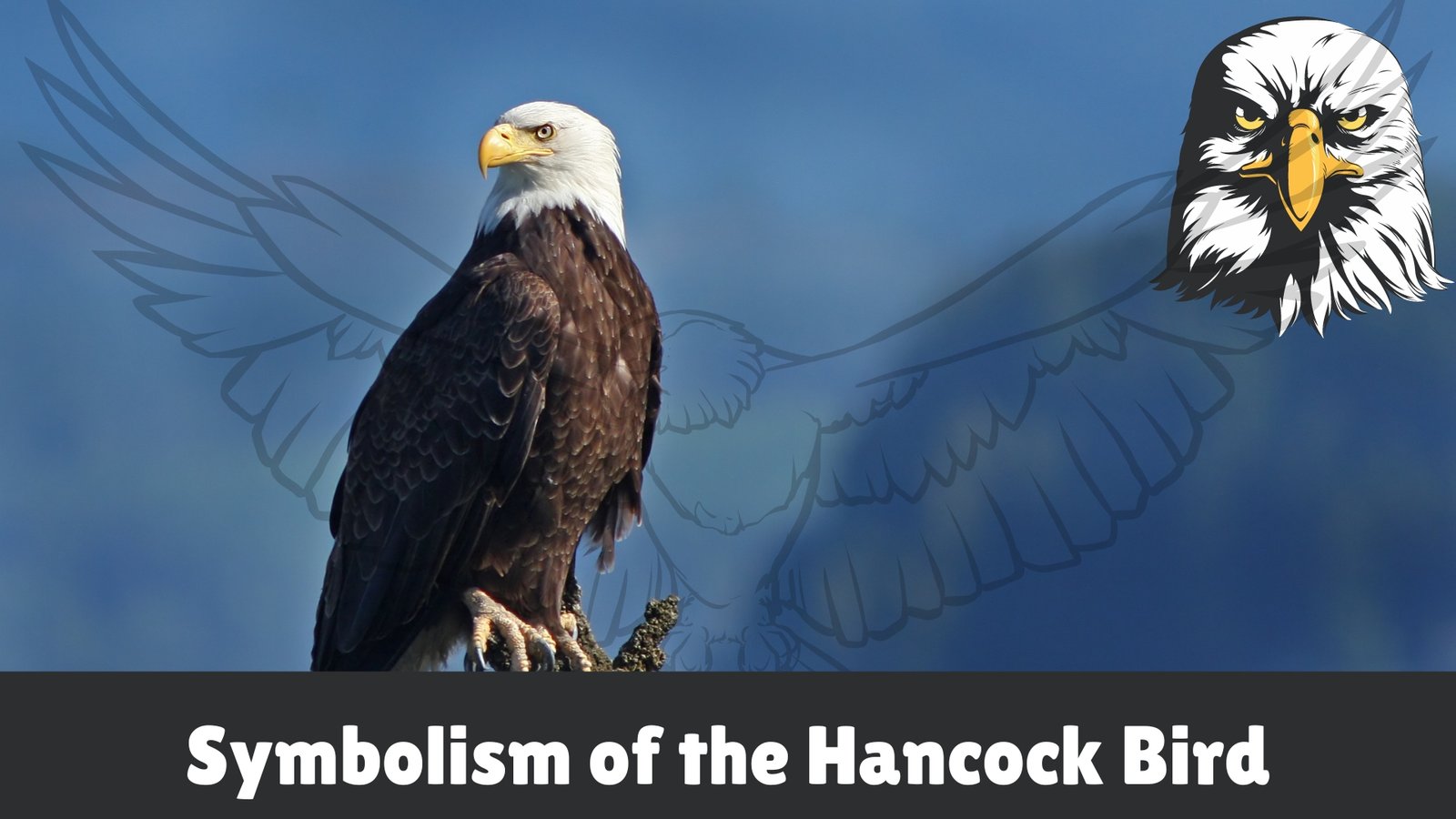The Hancock Bird, also known as the Parker or Hancock, holds a special significance in the realm of symbolism and nature. This majestic creature is a symbol of the beauty, tenacity, and interdependence of the natural world in the complex tapestry of life. In this blog post, we will delve into the meaning behind the Hancock Bird and explore the lessons we can learn from this remarkable creature.
The Beauty and Grace of the Hancock Bird
The visual splendor of the Hancock Bird is undeniably mesmerizing. Adorned with a kaleidoscope of colors, its plumage shimmers in the sunlight, a natural masterpiece that draws the eye and captivates the soul. Each feather, a stroke of nature’s brush, reveals patterns that seem almost too intricate to have been formed by chance, showcasing nature’s unparalleled artistry. The Hancock Bird’s movement is poetry in motion; its flight is not merely a means of travel but a ballet in the air, with each wingbeat and glide reflecting a level of finesse and elegance that few creatures possess. This bird’s ability to move so effortlessly, darting through the air, then hovering momentarily as if the world around it has paused, underscores the marvels of avian agility and the profound adaptability of wildlife. Witnessing the Hancock Bird in its natural habitat, interacting with its surroundings, is to observe the delicate balance of nature’s ecosystems. Its behavior, from the meticulous care it takes in grooming its feathers to its strategic foraging practices, provides a window into the daily life of a species that embodies the essence of grace. The Hancock Bird, through its mere presence, encourages us to appreciate the fleeting beauty present in our world and to recognize the artistry and elegance inherent in nature’s design.
Tenacity Against the Odds: The Survival of the Hancock Bird
The Hancock Bird exemplifies unwavering resilience in the face of mounting ecological pressures. These challenges, ranging from deforestation to the impacts of climate change, have not deterred this species from demonstrating an incredible will to survive. It’s this bird’s adaptability to rapidly changing environments that stands out as a testament to its enduring spirit. Through shifting climates and altering landscapes, the Hancock Bird finds ways to thrive, altering its migration patterns, adjusting breeding seasons, and exploiting new food sources as necessary. This adaptability is a powerful reflection of the Hancock Bird’s resilience, showcasing an innate ability to navigate and overcome obstacles that many species find insurmountable.
Equally impressive is the Hancock Bird’s response to human encroachment. Despite the loss of significant portions of its natural habitat, this bird has shown a remarkable capacity to coexist in altered ecosystems. In some cases, it has even benefited from the proximity to human activities, utilizing agricultural lands and urban parks to find food and nesting sites. This ability to find a foothold in changing environments underlines the Hancock Bird’s resourcefulness and its dogged determination to survive.
The survival story of the Hancock Bird is not just a narrative of endurance; it is a clarion call for biodiversity conservation. It highlights the urgent need for efforts to mitigate the challenges it faces, ensuring that this symbol of tenacity continues to soar in the skies. Through understanding and supporting the Hancock Bird’s fight for survival, we learn valuable lessons in resilience and adaptability that resonate well beyond the natural world.
Interdependence in the Natural World: Lessons from the Hancock Bird
The Hancock Bird’s existence is a vivid illustration of the intricate web of relationships that define our ecosystem. Through its daily activities, it engages in a series of interactions that underscore the mutual dependencies between species. For example, as it pollinates flowers while feeding on nectar, the Hancock Bird not only sustains its own life but also plays a pivotal role in the reproductive cycle of plants. Similarly, its role as prey for larger predators highlights the delicate balance of predator-prey dynamics that is essential for maintaining the health and stability of ecosystems.
Beyond its direct interactions, the Hancock Bird’s nesting and migration patterns contribute to the dispersal of seeds and the control of insect populations, further influencing the biodiversity of its habitat. These activities demonstrate the bird’s role in ecosystem services that benefit a wide array of other species, including humans. The Hancock Bird’s reliance on specific habitat conditions also emphasizes the importance of habitat conservation and the consequences of habitat loss on biodiversity.
By observing the Hancock Bird, we gain insights into the fundamental principle that the survival of a species is deeply intertwined with the fates of others. This understanding can lead to a greater appreciation for the diversity of life and the need for concerted conservation efforts. The story of the Hancock Bird encourages us to acknowledge our place within this network of interdependence and to act responsibly to preserve the natural world for future generations.
The Hancock Bird Meaning: A Symbol of Hope and Renewal
In the rich tapestry of cultural narratives and personal aspirations, the Hancock Bird stands out as an emblem of rejuvenation and optimism. This avian marvel, with its resilient spirit and striking adaptability, serves as a poignant reminder that even in the darkest times, there exists the potential for renewal and transformation. Its annual migration, a feat of endurance and determination, mirrors the human journey through challenges toward brighter horizons. As the Hancock Bird navigates vast distances, braving obstacles and embracing change, it teaches us the invaluable lesson that growth is often born from adversity.
Moreover, the Hancock Bird’s vibrant plumage, changing with the seasons, symbolizes the beauty of life’s constant flux and our capacity to emerge from trials with renewed vigor and vitality. In observing its seamless adaptation to the shifting dynamics of the natural world, we are encouraged to remain flexible and open to new beginnings. The Hancock Bird, in its essence, embodies the hope that lies in the possibility of starting anew, urging us to view change not as an end but as the precursor to a new chapter.
Thus, the Hancock Bird’s narrative is not merely about survival; it is a narrative steeped in the promise of regeneration. It beckons us to embrace change with grace and to see beyond the present moment, towards the promise of a reinvigorated existence. In this way, the Hancock Bird is not just a symbol, but a guiding light towards hope and renewal in our lives.
Conservation Efforts and the Future of the Hancock Bird
As the world continues to grapple with environmental challenges, the plight of the Hancock Bird becomes increasingly critical. The preservation of this remarkable species hinges on robust conservation efforts that address both habitat loss and the broader ecological impacts of human activity. Initiatives aimed at protecting the natural habitats of the Hancock Bird, such as establishing protected areas and implementing sustainable land-use practices, are essential for its survival. Additionally, combating climate change and reducing pollution are imperative to ensure the stability of the ecosystems upon which the Hancock Bird relies. Public education and community engagement play pivotal roles in these conservation efforts, fostering a collective responsibility towards protecting our natural heritage. By promoting policies that prioritize biodiversity and funding research to better understand the needs of the Hancock Bird, we can develop more effective strategies for its conservation. Moreover, supporting organizations dedicated to wildlife conservation can amplify our impact, translating individual actions into collective progress. The journey towards a secure future for the Hancock Bird is complex and requires a multifaceted approach, but with concerted effort and global cooperation, we can aspire to a world where this symbol of natural beauty and resilience thrives for generations to come.
Must Read: The Role of BTD6_Fix_Repair_Steam_V2_Generic in Application Repairs
Embracing the Spirit of the Hancock Bird in Our Lives
Drawing inspiration from the Hancock Bird requires us to adopt a holistic view of our existence, recognizing the importance of resilience, elegance, and mutual support. Just as this bird exhibits incredible adaptability, facing environmental changes head-on, we too can learn to adapt to life’s uncertainties with grace. This doesn’t mean merely surviving the challenges we encounter but thriving amidst them, using our ingenuity and strength to find new ways forward. Moreover, the Hancock Bird’s grace in flight and its colorful plumage remind us to appreciate the beauty around us and within us, even in the most mundane aspects of life. Its elegance in the air teaches us about the importance of moving through life with poise and purpose, making every action count.
Additionally, understanding the interdependent relationships the Hancock Bird maintains with its ecosystem can inspire us to recognize our own connections with the people and the world around us. Just as this bird plays a critical role in pollination and seed dispersion, we too have roles that support and nurture our communities, emphasizing the power of collective effort and cooperation. By embracing these qualities, we can foster a deeper connection to the natural world, advocate for its protection, and encourage others to see their part in these intricate webs of interdependence. In essence, letting the spirit of the Hancock Bird guide us is a call to live more thoughtfully, with resilience, grace, and a keen awareness of our impact on the world and each other.





